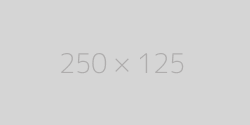
Robots.txt Generator

About Robots.txt Generator
Robots.txt File Generator
Website crawlers, or robots, are used by search engines like Google to examine all the material on your website. You might not want certain areas of your website, such as the admin page, to be indexed so that they can appear in user search results. You can explicitly skip certain pages by adding them to the file. The Robots Exclusion Protocol is used by robots.txt files. You can quickly create the file using this website by entering the pages you want to exclude.
The robots.txt file is a text document that specifies the areas of a domain that robots are allowed to crawl.
A link to the XML-sitemap may also be included in the robots.txt file.
This protocol, also known as the robots exclusion protocol, is used by websites to inform the bots which sections of their website need to be indexed. Additionally, you may designate which areas—those that have duplicate material or are still under construction—you don't want these crawlers to process.
There is a good chance that bots like malware detectors and email harvesters will start looking at your site from the regions you don't want to be indexed because they don't adhere to this standard and search for security flaws.
What a Robots.txt File's Directives?
You must be aware of the file's guidelines if you are manually generating the document. Once you understand how they operate, you can even change the file later.
-
Allowing: The following URL can be indexed due to the Allowing directive. You are free to add as many URLs as you like, particularly if it is a shopping website since your list may grow significantly. However, only use the robot's file if there are pages on your site that you don't want to be crawled.
-
Disallowing: A Robots file's main function is to prevent crawlers from accessing the mentioned links, directories, etc. Other bots, however, access these directories and must scan them for malware because they don't adhere to the norm.

